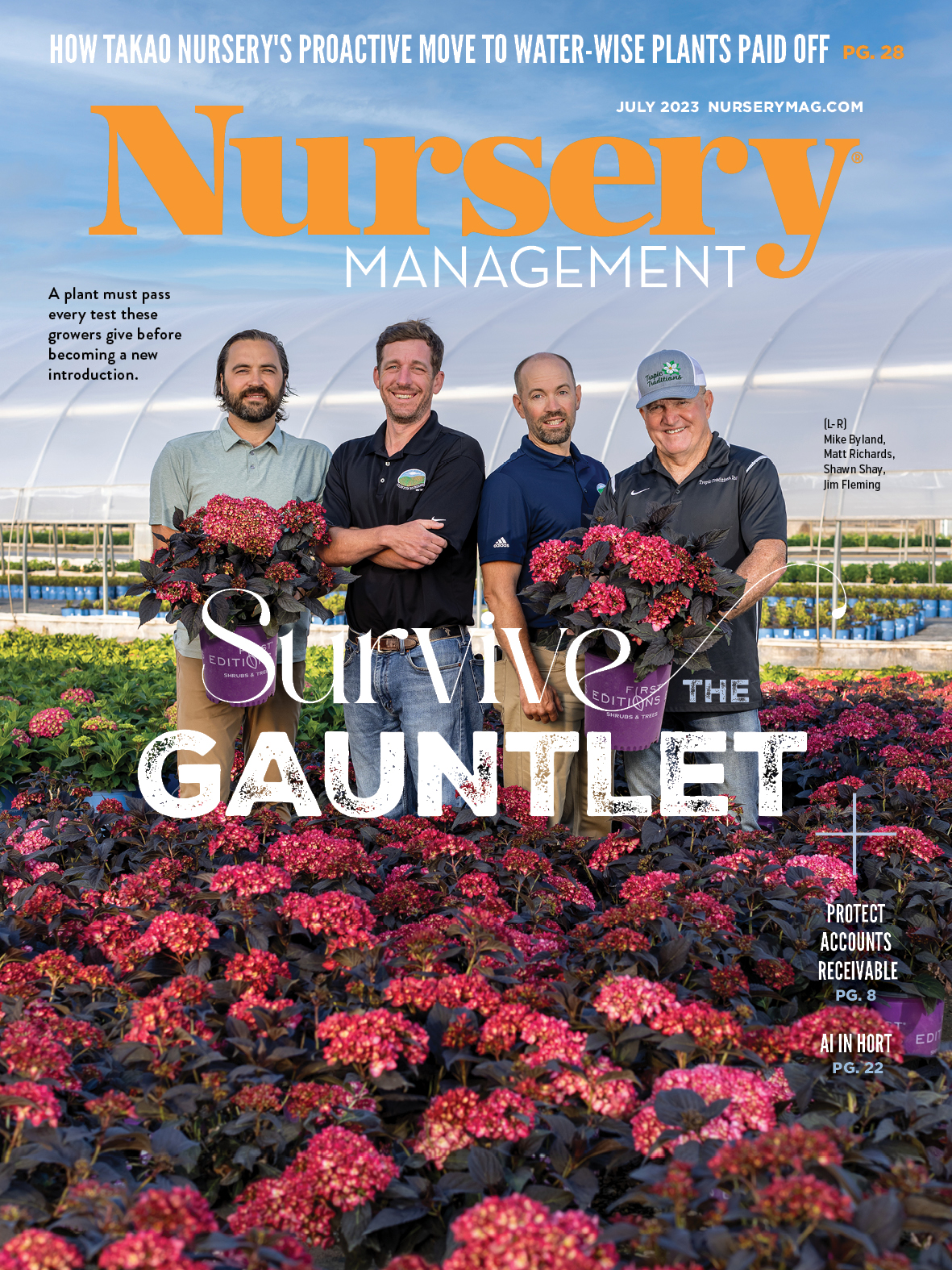

From 2007 until 2009, California was experiencing a historic drought. But it was the first major drought since the early 1990s and it was business as usual throughout much of the state. However, Danny Takao performed some meteorological and hydrological sleuthing and was convinced the Golden State’s landscape needs would change from re-occurring droughts and water supply issues. Danny began adding water-wise plants to Takao Nursery’s availability list among the many perennials that were popular with customers.
“The most notable of the water-wise plants he added was UC Verde Buffalograss, now off patent and called California buffalograss,” says Lisa Takao-McCall, director of operations (and Danny’s daughter) at family-operated, Fresno-based Takao Nursery. “This variety was developed specifically for the hot and dry California climate by researchers at UC Davis and UC Riverside. He also brought in Kurapia, a drought-tolerant groundcover that can be used as a lawn substitute and in commercial settings for erosion control.”
The list of drought-tolerant plants grew little by little, concurrent with the dry weather patterns in the state.
“There was a lack of supply of drought-tolerant plants and very little competition at the time,” she recalls. “They tend to be a little harder to propagate compared to some of the more common plants we were growing. So I knew if we could get propagation down, it would protect us in the marketplace.”
When the nursery began adding more water-wise plants, there was still a lot of denial about the state being in danger of multiple-year droughts, Lisa says.
“A lot of people said, ‘it’s just a temporary dry season.’ But once the state began rolling out with water restrictions and fines and not letting people water, we started seeing changes from the bottom up,” she says. “Consumers were making changes and that forced commercial growers and garden centers to start carrying drought-tolerant plants.”
Next level
When Lisa moved into a leadership position at the nursery in 2014, California was in the middle of a five-year drought.
“I drastically reduced our list and doubled down on drought-tolerant plants and California natives,” she says. “We have seen our sales increase year after year since then.”
Now drought-tolerant plants make up 85-90% of their inventory.
“I think a combination of tightening restrictions on water use, cost of water and consumer knowledge about drought-tolerant plants have encouraged the demand,” she says. “After all these years, the general public has finally accepted that we are truly in a drought, and it is most likely here to stay. We are now seeing consumers pressing garden centers for water-wise varieties and garden centers requesting it from our grower customers. Still, most of our plants are going to growers who supply commercial projects.”
As drought becomes more pervasive in other parts of the U.S., sales from outside California are increasing. “Although the majority of our plants ship throughout California, we do ship throughout the U.S. on a weekly basis and periodically into Canada. Most of the demand for drought-tolerant plants is still within the Golden State, as we have been hit the hardest and for the longest,” she says. “We continue to refine our list with a drought-tolerant scope and believe the demand will only increase in the future. I feel within the next five or 10 years, many other states will begin to follow suit because of ongoing climate change and forced water regulations.”
Instead of waiting for states to enact water restrictions, growers can be proactive and provide more education and promotion of drought-tolerant plants, Lisa says. “Most people just don’t know all the different varieties that exist. Once they see a picture of it, they’re sold. And then add in the fact that they use less water and many are pollinator friendly — double sold. Especially with native plants — you’re not only saving water, you’re helping to create natural habitats for native wildlife and insects. Drought-tolerant plants will do far more for your local ecosystem than planting just annuals and turf,” she says.
When it comes to promoting and marketing drought-tolerant plants, that doesn’t mean exclusively native varieties.
“Often, people aren’t aware that plants they may already be familiar with are considered drought tolerant, like lavenders, salvias and Mediterranean plants,” she explains. A water-wise landscape can be achieved with many different ‘looks,’ we just need to show consumers how.”
Beyond the ecological benefits, Lisa says to market the plants’ money saving benefits.
“The cost of water is only going up while supply continues to be an ongoing future concern. And with more and more restricted water regulations, getting caught watering on an ‘off day’ [in California] is going to cost you fines.”
There are growth opportunities for selling drought-tolerant plants to consumers, landscape firms, municipalities and others, she says.
“It has taken some time in California, but drought-tolerant plants are becoming more mainstream every day. The more people become informed about them, the more demand there is. We are seeing consumer demand lead to an increase in supply at garden centers, and also with drought-tolerant lawn alternatives like California Buffalograss and Kurapia. Landscape architects are specifying more drought-tolerant varieties for commercial jobs and I’ve even seen changes in local regulations — new home subdivisions must have drought-tolerant plants installed by the builder. No water-guzzling fescue lawn,” she says.

Explore the July 2023 Issue
Check out more from this issue and find you next story to read.
Latest from Nursery Management
- GardenComm 2024 Annual Conference registration is open
- Landmark Plastic celebrates 40 years
- CropLife applauds introduction of Miscellaneous Tariff Bill
- Greenhouse 101 starts June 3
- Proven Winners introduces more than 100 new varieties for 2025
- CIOPORA appoints Micaela Filippo as vice secretary-general
- Rock Star Roses
- The container challenge





